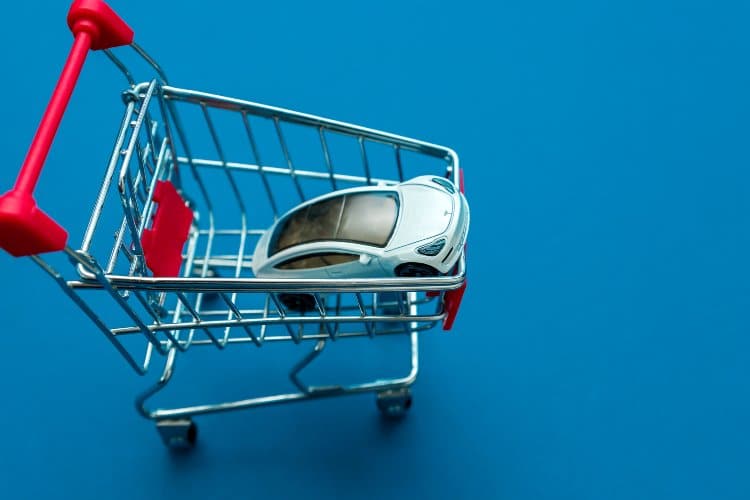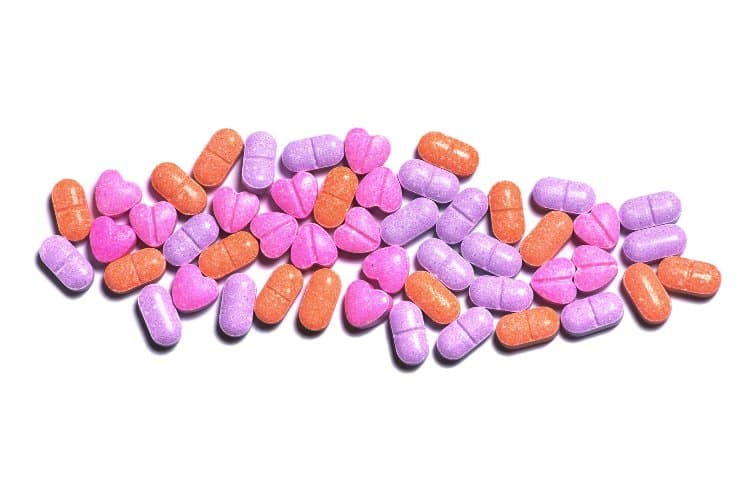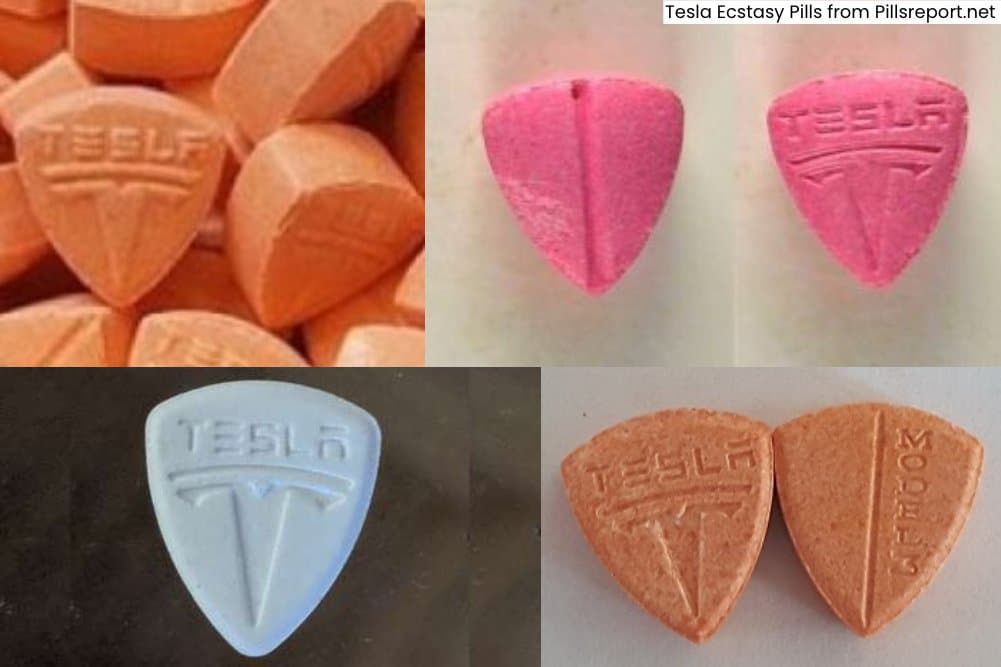In the constantly evolving world of recreational drug use, one name has surged to the forefront with an unexpected twist: Tesla. Not the electric car manufacturer, but rather the moniker for a potent and popular form of ecstasy pill. These Tesla-branded pills have become more than just a means to a euphoric high; they’ve transformed into a cultural phenomenon that intertwines the allure of a global tech brand with the underground world of illicit substances.
Originally, ecstasy, or MDMA (3,4-methylenedioxy-methamphetamine), made its mark as a “club drug,” sought after for its ability to produce heightened energy, euphoria, and altered sensory perceptions. However, in recent times, the branding of ecstasy has taken a unique turn. Pills emblazoned with the logo of Tesla, Inc., have emerged, adding a layer of modern cultural symbolism to their allure. This branding strategy is not just a random choice; it reflects a deeper narrative about how consumer culture and corporate branding intersect with the world of recreational drug use.
Tesla pills stand out not only for their distinctive logo but also for their reported potency and purity, factors that have significantly contributed to their popularity, especially among young partygoers. But beneath the surface of their sleek branding and the promised high, a myriad of risks lurks – from potential adulteration with harmful substances to the dangers of overdose. This dichotomy presents Tesla pills as a double-edged sword, emblematic of the broader challenges and complexities inherent in modern drug culture.
Historical Context and Cultural Significance
The story of Tesla Ecstasy Pills is as much about cultural evolution as it is about pharmacology. To understand their place in today’s society, it’s essential to trace the roots of ecstasy, or MDMA, and how it transitioned from a therapeutic compound to a staple of nightclub culture, eventually leading to the rise of branded pills like Tesla.
The Origins of MDMA
MDMA was first synthesized in 1912, but it wasn’t until the late 20th century that it gained prominence as a psychoactive drug. Initially explored for its potential therapeutic uses, especially in psychotherapy, MDMA eventually found its way into the nightclub scene of the 1980s. Known for inducing euphoria, heightened sensations, and a sense of closeness among users, it became synonymous with rave culture and dance music.
The Rise of Branded Ecstasy
As ecstasy’s popularity soared, so did the variety of its forms. One notable evolution was the advent of ‘branded’ ecstasy pills. Starting with simple designs, the pills soon began to feature logos and icons recognizable in popular culture. Early examples like the ‘Pink Panther’ and ‘007’ pills paved the way for a trend where the identity of the pill became as crucial as its effects. This trend reflected a deeper connection between the drug culture and the broader societal trends, where branding became a form of expression and identification.
The Tesla Pill Phenomenon
The emergence of Tesla pills around 2015 marked a significant point in this evolution. Named and stamped with the logo of the renowned electric car manufacturer, Tesla pills became a symbol of modernity, technological aspiration, and cultural relevance. Their popularity was not merely due to their high potency but also because they resonated with a generation that idolizes tech innovation and success. The Tesla brand, synonymous with cutting-edge technology and environmental consciousness, unwittingly became a part of the ecstasy narrative, adding a layer of contemporary allure to the drug.
Cultural Impact of Tesla Pills
The cultural significance of Tesla pills extends beyond their mere consumption. They represent the intersection of drug culture with mainstream societal trends. This blending of a tech icon with an illicit substance highlights the changing perceptions and attitudes toward drug use, especially among younger demographics. It also underscores how drug manufacturers leverage popular culture to enhance the appeal of their products, making them more enticing to potential users.
The history and cultural significance of Tesla Ecstasy Pills encapsulate a broader narrative about how recreational drug use adapts and evolves with societal trends. The branding of ecstasy with a tech giant’s logo is more than a marketing tactic; it’s a reflection of the times when technology, culture, and recreational drug use intersect in complex and sometimes troubling ways.

The Appeal of Branding in Illicit Substances
The phenomenon of branding illicit substances like ecstasy is not merely a marketing gimmick; it’s a reflection of deeper psychological and cultural dynamics. Understanding the appeal of branding in drugs like Tesla Ecstasy Pills requires delving into the psychology of consumer behavior, the allure of symbolism, and the role of branding in perceived quality and safety.
The Psychology of Branding
Branding has long been a powerful tool in shaping consumer preferences and behaviors. In the context of illicit drugs, branding serves several purposes. Firstly, it creates a sense of familiarity and reliability in an otherwise unregulated market. Users often associate branded pills with consistent quality and potency, reducing the perceived risk in a decision fraught with uncertainties.
Symbolic Association
The choice of a particular brand, like Tesla, for ecstasy pills is not random. It carries symbolic weight. Tesla, as a brand, is associated with innovation, luxury, and a forward-thinking ethos. These associations are transferred to the drug, giving it an aura of being ‘cutting-edge’ or ‘elite.’ For users, consuming a Tesla-branded pill is not just about the physical effects but also about participating in a particular cultural narrative.
Cultural Trends and Aspirations
The use of tech brand logos in ecstasy pills reflects the aspirations and values of contemporary society. In a digital age where technology companies represent success and modernity, their logos become symbols of a desirable lifestyle. Users are drawn to these pills not just for the high they offer but also for the feeling of connection to these modern cultural icons. This phenomenon is particularly pronounced among younger users, who are more influenced by trends and peer perceptions.
Marketing and Differentiation
In an illegal drug market flooded with choices, distinctive branding helps a product stand out. Manufacturers of ecstasy pills use logos like Tesla’s to differentiate their products from competitors, creating a brand identity that can be easily communicated and remembered. This branding strategy is akin to word-of-mouth marketing in the illicit drug world, where reputation and recognition are crucial for market dominance.
Perceived Safety and Quality
Branded ecstasy pills often carry a perception of being ‘safer’ or of higher quality than unbranded or generic variants. Although this perception may not always be accurate, it influences user choices. The presence of a recognizable logo can falsely reassure users that the pill is less likely to contain harmful adulterants despite the inherent risks of unregulated drug use.
The appeal of branding in illicit substances like Tesla Ecstasy Pills is a complex interplay of psychological, cultural, and market dynamics. It reflects how drug manufacturers astutely tap into consumer psychology and cultural trends to enhance the appeal of their products. While this may increase the desirability of the drug, it also underscores the risks and the critical need for awareness and education about the realities of substance use and abuse.

Pharmacological Effects of MDMA
The allure of Tesla Ecstasy Pills, and ecstasy in general, is inextricably linked to the pharmacological effects of MDMA, its active ingredient. Understanding these effects is crucial to comprehending why MDMA remains a popular recreational drug and the risks associated with its use.
What is MDMA?
MDMA, or 3,4-methylenedioxy-methamphetamine, is a synthetic drug that alters mood and perception. It is chemically similar to both stimulants and hallucinogens, producing feelings of increased energy, pleasure, emotional warmth, and distorted sensory and time perception.
How MDMA Affects the Brain
MDMA exerts its primary effects in the brain on neurons that use the chemicals serotonin, dopamine, and norepinephrine to communicate with other neurons. The drug causes these neurons to release large amounts of these substances while preventing their reuptake, leading to an amplified and prolonged effect on mood and perception.
- Serotonin: This neurotransmitter is most affected by MDMA. Its release leads to the mood-lifting effects of ecstasy, as well as feelings of emotional closeness and empathy. However, this flood of serotonin also depletes the brain’s supply, which can lead to mood swings, depression, or anxiety in the days following MDMA use.
- Dopamine: Known for its role in the ‘reward circuit,’ dopamine’s release under the influence of MDMA leads to increased energy and reinforces behaviors by linking them to feelings of pleasure.
- Norepinephrine: This neurotransmitter increases heart rate and blood pressure, which can be particularly risky for individuals with heart and blood vessel problems.
Physical Effects
Apart from its psychological impacts, MDMA also has several physiological effects. Users often experience:
- Nausea
- Chills and sweating
- Muscle cramping
- Blurred vision
- Teeth clenching
In high doses, MDMA can interfere with the body’s ability to regulate temperature, potentially leading to a dangerous increase in body temperature (hyperthermia), which can result in liver, kidney, or heart failure.
Duration of Effects
The effects of MDMA typically last between 3 to 6 hours. Users might take a second dose as the effects of the first dose begin to fade, which can amplify and prolong the adverse effects and risks.
Risks and Long-Term Consequences
While MDMA can produce short-lived euphoria and social connectedness, it also comes with significant risks. These include the potential for neurotoxic damage, long-term cognitive deficits, and susceptibility to mental health disorders. The unregulated nature of ecstasy pills, including Tesla-branded ones, further exacerbates these risks due to the possibility of unknown and harmful adulterants.
The pharmacological effects of MDMA are a double-edged sword. On one hand, they provide the sought-after euphoria and emotional connection that many users crave. On the other, they pose serious risks to both mental and physical health, especially when used frequently or in high doses. Understanding these effects is crucial for anyone considering the use of Tesla Ecstasy Pills or other MDMA-containing substances.
Health Risks and Dangers
While the allure of Tesla Ecstasy Pills lies in their potent effects and cultural cachet, it’s imperative to understand the significant health risks and dangers associated with their use. MDMA, though occasionally touted for its potential in therapeutic settings, poses serious risks when used recreationally, especially in unregulated forms like Tesla pills.
Immediate Physical Risks
The immediate physical effects of MDMA can range from uncomfortable to life-threatening. Common immediate side effects include:
- Hyperthermia: An acute rise in body temperature, which can lead to heatstroke.
- Dehydration: Often exacerbated by the hot, crowded conditions of dance floors and festivals.
- Hyponatremia: A potentially dangerous drop in blood sodium levels, often due to excessive water intake and sweating.
- Cardiovascular Problems: Increased heart rate and blood pressure pose risks, particularly for those with underlying heart conditions.
Neurological Risks
MDMA’s impact on the brain can lead to several short-term neurological issues:
- Serotonin Syndrome: A potentially life-threatening condition resulting from excessive serotonin in the brain.
- Cognitive Impairment: Problems with memory, attention, and decision-making following use.
- Psychological Distress: Anxiety, paranoia, and panic attacks can occur during or after MDMA use.
Long-Term Health Consequences
Repeated use of MDMA can lead to more profound and persistent health issues, including:
- Neurotoxicity: Potential long-term damage to serotonin neurons.
- Psychological Issues: Depression, anxiety, and other mood disorders can develop or worsen with regular use.
- Cognitive Decline: Long-term users may experience persistent memory and attention deficits.
The Dangers of Adulteration
A significant risk with Tesla pills, as with any street-bought ecstasy, is the uncertainty regarding their composition. These pills can be adulterated with substances more dangerous than MDMA, such as:
- Methamphetamine
- Bath Salts (Synthetic Cathinones)
- PMA/PMMA, which are more toxic than MDMA
- Fentanyl and other opioids
The presence of these adulterants can drastically increase the risk of adverse reactions, overdose, and death.
Overdose Potential
The high potency of Tesla pills raises the risk of overdose. Symptoms of MDMA overdose include:
- Severe hyperthermia
- Heart failure
- Seizures
- Loss of consciousness

Ecstasy (MDMA) Treatment and Recovery
The journey towards recovery from the use of Tesla Ecstasy Pills, or MDMA in general, involves a comprehensive approach encompassing both medical and psychological strategies. This journey, while challenging, offers the possibility of a fulfilling life free from dependency.
Understanding MDMA Addiction
MDMA addiction is predominantly psychological, marked by a strong desire to recreate the euphoria and sense of connection the drug induces. Unlike substances that cause physical dependence, MDMA users may become psychologically dependent, continuing use despite knowing its harmful effects. Recognizing addiction involves noticing behavioral changes such as increased risk-taking, neglect of responsibilities, and continued use despite harmful consequences.
Treatment Approaches for Ecstasy Addiction
The first step in MDMA addiction treatment often involves detoxification, particularly for users who mix MDMA with other substances. Although MDMA withdrawal may not typically present severe physical symptoms, medical supervision can help manage discomfort and address polysubstance use. Behavioral therapies form the cornerstone of treatment, with Cognitive-Behavioral Therapy (CBT) helping individuals to understand and change thought patterns that lead to drug use. Motivational Interviewing can enhance the individual’s motivation towards positive change, while group therapy provides a supportive environment for sharing experiences and strategies. Supportive care, including mental health counseling and lifestyle modifications, further bolsters the recovery process.
Recovery and Aftercare
Long-term recovery from MDMA addiction is a continuous journey beyond mere abstinence from drug use. It encompasses rebuilding a healthy, fulfilling life without reliance on substances. Aftercare programs like alumni support groups and continued counseling are crucial for ongoing support and relapse prevention.
The Role of Family and Community
Family and friends play a vital role in the recovery process, offering emotional support and helping create a stable environment conducive to recovery. Community resources such as local support groups and educational programs provide additional layers of support for individuals in recovery and their families.
The treatment and recovery from MDMA use, including addiction to Tesla Ecstasy Pills, require a holistic approach that addresses both physical and psychological aspects. With the right combination of medical intervention, psychological support, lifestyle changes, and community support, individuals can overcome the challenges of addiction and embrace a drug-free life.
Help is Available
The exploration of Tesla Ecstasy Pills reveals a complex tapestry woven from threads of cultural trends, pharmacological effects, health risks, societal impacts, and the challenges of treatment and recovery. These pills, emblematic of a broader phenomenon in the world of illicit drug use, highlight the intersection of modern culture, technology, and recreational substance use.
Tesla pills, with their alluring branding and potent effects, have become more than just a means for a euphoric experience; they symbolize a cultural moment where the lines between technology, aspiration, and risk are increasingly blurred. However, beneath the surface of this modern allure lies a stark reality of significant health risks, both immediate and long-term, and the potential for life-altering consequences.
The societal impact of these pills extends beyond individual users, influencing youth culture, public health, and law enforcement. They prompt important discussions about drug policy, harm reduction strategies, and the ethical implications of corporate branding in the context of illicit drug use. These discussions are vital in understanding and addressing the challenges posed by substances like Tesla pills in our society.
If you or someone you know is struggling with drug or alcohol addiction, it’s important to remember that help is available. Healthy Life Recovery, an addiction and mental health treatment center located in San Diego, California, offers a supportive environment and comprehensive treatment programs tailored to individual needs. Their team of professionals is dedicated to helping individuals overcome addiction and embark on a journey towards a healthier, drug-free life. Don’t hesitate to reach out to Healthy Life Recovery for guidance, support, and the first step towards recovery.
References
- Figurasin, R. (2022, September 4). 3,4-Methylenedioxy-Methamphetamine toxicity. StatPearls – NCBI Bookshelf. https://www.ncbi.nlm.nih.gov/books/NBK538482/
- What is the history of MDMA? | National Institute on Drug Abuse. (2021, April 13). National Institute on Drug Abuse. https://nida.nih.gov/publications/research-reports/mdma-ecstasy-abuse/what-is-the-history-of-mdma
- Wilkinson, D. (2021, July 13). Warning over “10 strongest” ecstasy pills seen by Manchester drugs charity. Manchester Evening News. https://www.manchestereveningnews.co.uk/news/greater-manchester-news/warning-over-10-strongest-ecstasy-16714295
- Stone, Z. (2017, August 8). Tastes like Tesla: How Tesla ecstasy pills became the hot way to get high. Forbes. https://www.forbes.com/sites/zarastone/2017/08/08/tastes-like-tesla-how-tesla-ecstasy-pills-became-the-hot-way-to-get-high/?sh=6ca9a045762b
- Geider, P. (2022, January 15). The brilliance behind Tesla’s brand – Patrick Geider – medium. Medium. https://patrickgeider.medium.com/the-brilliance-behind-teslas-brand-ef30f4091903
- Banks, A. (2017, June 29). How branding has fueled drug culture. Highsnobiety. https://www.highsnobiety.com/p/vintage-drug-branding/
- Ecstasy/MDMA. Department of Justics/Drug Enforcement Administration. Drug Fact Sheet. https://www.dea.gov/sites/default/files/2020-06/Ecstasy-MDMA-2020_0.pdf
- What are MDMA’s effects on the brain? | National Institute on Drug Abuse. (2021, April 13). National Institute on Drug Abuse. https://nida.nih.gov/publications/research-reports/mdma-ecstasy-abuse/what-are-mdmas-effects-on-brain
- What are the effects of MDMA? | National Institute on Drug Abuse. (2021, April 13). National Institute on Drug Abuse. https://nida.nih.gov/publications/research-reports/mdma-ecstasy-abuse/what-are-effects-mdma
- Hyperthermia: too hot for your health. (2015, September 29). National Institutes of Health (NIH). https://www.nih.gov/news-events/news-releases/hyperthermia-too-hot-your-health-1
- Sarkar, S., & Schmued, L. C. (2010). Neurotoxicity of Ecstasy (MDMA): An Overview. Current Pharmaceutical Biotechnology, 11(5), 460–469. https://doi.org/10.2174/138920110791591490
- Liechti, M. E. (2014). Effects of MDMA on body temperature in humans. Temperature, 1(3), 192–200. https://doi.org/10.4161/23328940.2014.955433
- Elkattawy, S., Mowafy, A., Younes, I., Tucktuck, M., & Agresti, J. (2021). Methylenedioxymethamphetamine (MDMA)-Induced Hyponatremia: case report and literature review. Cureus. https://doi.org/10.7759/cureus.15223
- Professional, C. C. M. (n.d.-b). Serotonin syndrome. Cleveland Clinic. https://my.clevelandclinic.org/health/diseases/17687-serotonin-syndrome
- Synthetic cathinones (“Bath salts”) | National Institute on Drug Abuse. (2023, August 2). National Institute on Drug Abuse. https://nida.nih.gov/research-topics/synthetic-cathinones-bath-salts
- How are MDMA use disorders treated? | National Institute on Drug Abuse. (2023, October 2). National Institute on Drug Abuse. https://nida.nih.gov/publications/research-reports/mdma-ecstasy-abuse/how-are-mdma-use-disorders-treated
- Pill Reports – Ecstasy test results Database by Enlighten. (n.d.). https://pillreports.net/index.php?page=search_reports&sent=1&name=tesla






